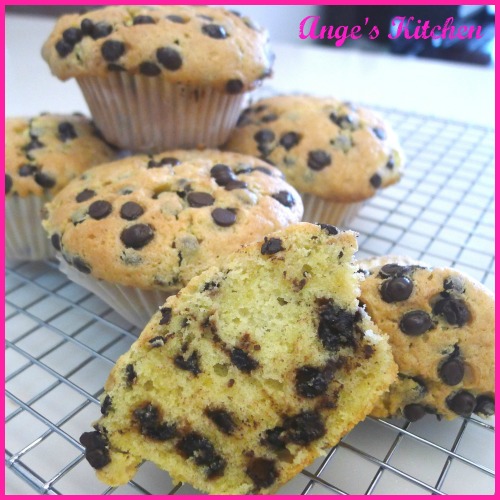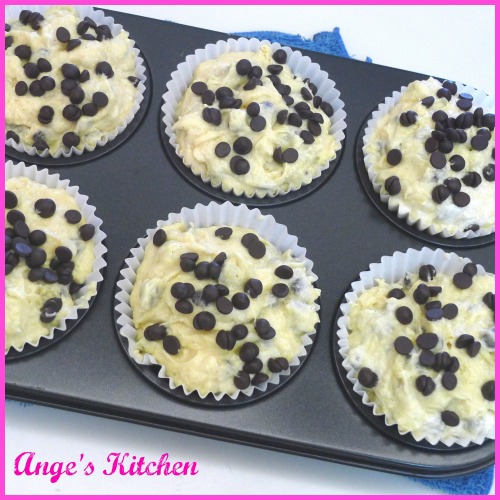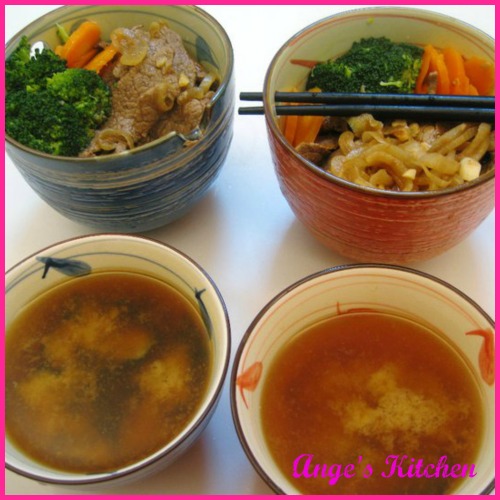I always always have a soft spot for for huge top muffins or what my hubby calls it as ‘mushroom-top’ muffins because of its overflowing crown which resembles a mushroom.
I mean seriously who can resist these delicious looking things, calling for us to bite into them.You must be wondering why I name it cookie top muffins. This is because the bird’s eye view of these muffins really do look like chocolate chip cookies. Also with those crusted crown, it does indeed really taste like a soft cookie, crispy at the edge. With the egg-separation method the body of the muffin is tenderly moist and soft (even till the next day).
These cookie-top muffins were so seriously good that my boys actually made me bake them for 3 consecutive days. So…. I have decided to place this under our Family’s Signature.
Here is how to make these lovely munchies. Totally AWESOME with a glass of cold milk or a cup of hot flora white tea. 🙂
Servings: 6 Jumbo Muffins
Ingredients
- 150g Top Flour
- 150g Unsalted Butter (Room Temperature)
- 100g Caster Sugar
- 3 Egg Yolks
- 1/8 tsp Baking Powder
- 1/4 tsp Salt ( I use my favourite pink salt)
- 1 tsp Vanilla Extract
- 120g Chocolate Chip (put aside 3 tsp for the muffin topping)
- French Meringue: 3 Egg Whites & 30g Caster Sugar
Preparations:
- Line the muffin tin.
- Preheat oven to 170°C.
Method (with step-by-step photo)
- Cream the butter to incorporate air till pale yellow.
- Add sugar and salt, whisk till light and fluffy(mayo-like texture).
- Whisk in egg yolk one at a time.
- Mix in the vanilla extract.
- Prepare french meringue in a clean mixing bowl (To read up on how to whisked up meringue, click here).
- Sift in flour and baking powder.
- Fold in the flour quickly till it just disappear into the butter mixture. DO NOT OVERMIX as you will end up with a tough & dense sponge.
- Add in chocolate chips.
- Fold in 1/3 of the meringue. Fold in the remaining meringue quickly.
- Fill lined muffin tin with batter to the brim. This will give you a beautifully crusted crown.
- Top off the batter with 1/2 tsp of chocolate chips on each muffin.
- Bake at 170°C for 35mins or when skewer comes out clean.
- Cool on cooling rack.




Verdict by Clemens (my eldest boy with a picky tongue):
- Best eaten after it has cooled off from the oven immediately because that’s when the crown is the crustiest and the body- warm, soft and moist. Totally deliciously.
- Great on the day itself because the top still feels like eating cookie with a moist and soft body.
- Second day- Still good but abit nah……… because the crown is no longer as crusty as the 1st day. but the body is till moist and yummy.
If there is anything I love to bake these muffins, it’s also the baking process. Watching the batter rise to have a glory crown is indeed truly fascinating. Watch the magic unfold:
The box of muffins Clemens had requested me to make for a special lady and a little girl. 🙂






















